Swiss technology tackles the climate crisis
Swiss start-ups and Swiss-based multinational companies are developing promising and often little-known solutions to address global warming. We visited several Swiss companies that are working to tackle the climate crisis.
Some solutions are well-established; others have just been launched or have completed the development phase. While some are complex and expensive, many are freely accessible to everyone. We have divided Swiss carbon-neutral technology solutions aimed at combating man-made pollution, reducing CO2 emissions and addressing the plastics crisis into six categories. An overview.
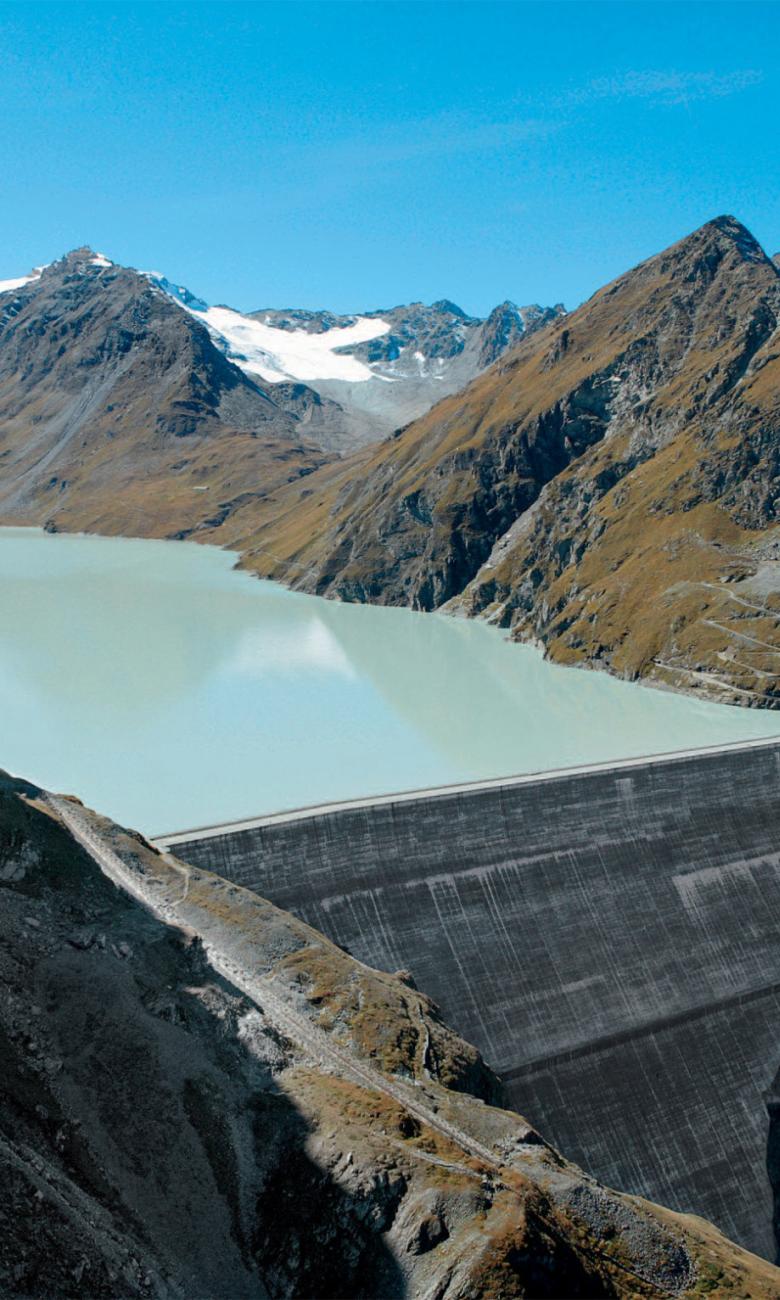
The advantages of solar panels
Once installed, solar panels produce energy at no additional cost. Made of inert materials, photovoltaic solar panels are inherently durable and allow homeowners to produce more kilowatt-hours than they consume. They are an increasingly popular technology to generate clean electricity, but according to experts they are still not being adopted fast enough. They come in blue or black, are typically rectangular, and can be mounted on rooftops, building façades and fences. Graubünden-based DHP Technology, for example, develops folding solar roofs.
Thin, translucent solar modules shaped like tiles are another solution. The agrivoltaic solar modules developed by Vaud-based start-up Insolight have been approved for use in agriculture. Homeowners can also install a solar panel and inverter on their balconies to reduce electricity bills.
Solar thermal panels are another option. Earlier this month, Geneva-based TVP Solar launched an industrial solar thermal plant at an Emmi production facility in the canton of Bern. The high-vacuum solar thermal collectors installed on the roof meet almost one-tenth of the cheese manufacturer's heating requirements. Geothermal energy is another promising solution: EPFL spin-off Enerdrape has begun installing geothermal panels in car parks to capture natural underground heat (or coolness in summer) to meet heating and cooling needs. According to Enerdrape, the system can supply 60% of a building's needs.
Biomass and geothermal energy
Geothermal technologies that harness heat energy from hundreds of metres below ground are being developed in Switzerland to meet residential and industrial building heating needs in winter and cooling needs in summer. Opting for a heat pump with a geothermal probe is one of the most cost-effective long-term ways to replace fossil-fuel-burning boilers. Deep drilling allows geothermal energy to be harnessed to generate electricity in both summer and winter. Solar pumps manufactured by Fribourg-based Swiss Intech are attracting strong interest in Africa for their ability to extract groundwater from depths of up to 90 metres.
Organic matter growing above ground is also a rich source of renewable energy. The groupe Corbat has set up a plant in Glovelier in the canton of Jura which produces hydrogen from wood. Hydrogen is a gas that can be used as a clean fuel for transportation and energy storage. Sion-based WattAnyWhere converts the ethanol produced from residue of the Biomass into electricity for electric vehicle charging stations. Bloom Biorenewables, based in Marly in the canton of Fribourg, extracts carbon from tree bark, leaves and seeds to make sustainable products.
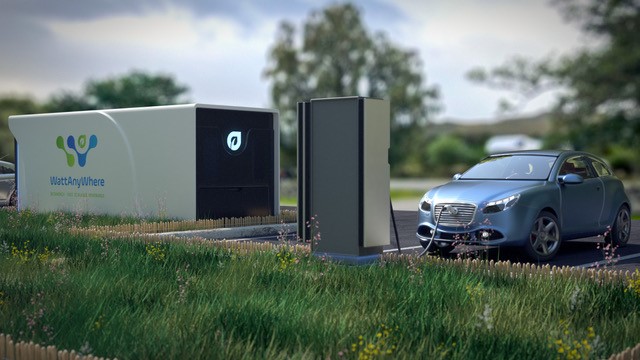
© WattAnyWhere
Chemical and life science solutions
TRS, Deasyl, DePoly and TreaTech are renewable energy pioneers in the chemistry and life sciences sector. TRS, based in the canton of Neuchâtel, uses sulphur-eating bacteria to produce rubber powder from recycled tyres which can be employed in many industries. Geneva-based Deasyl intends to recycle used oil to make second-generation biofuels.
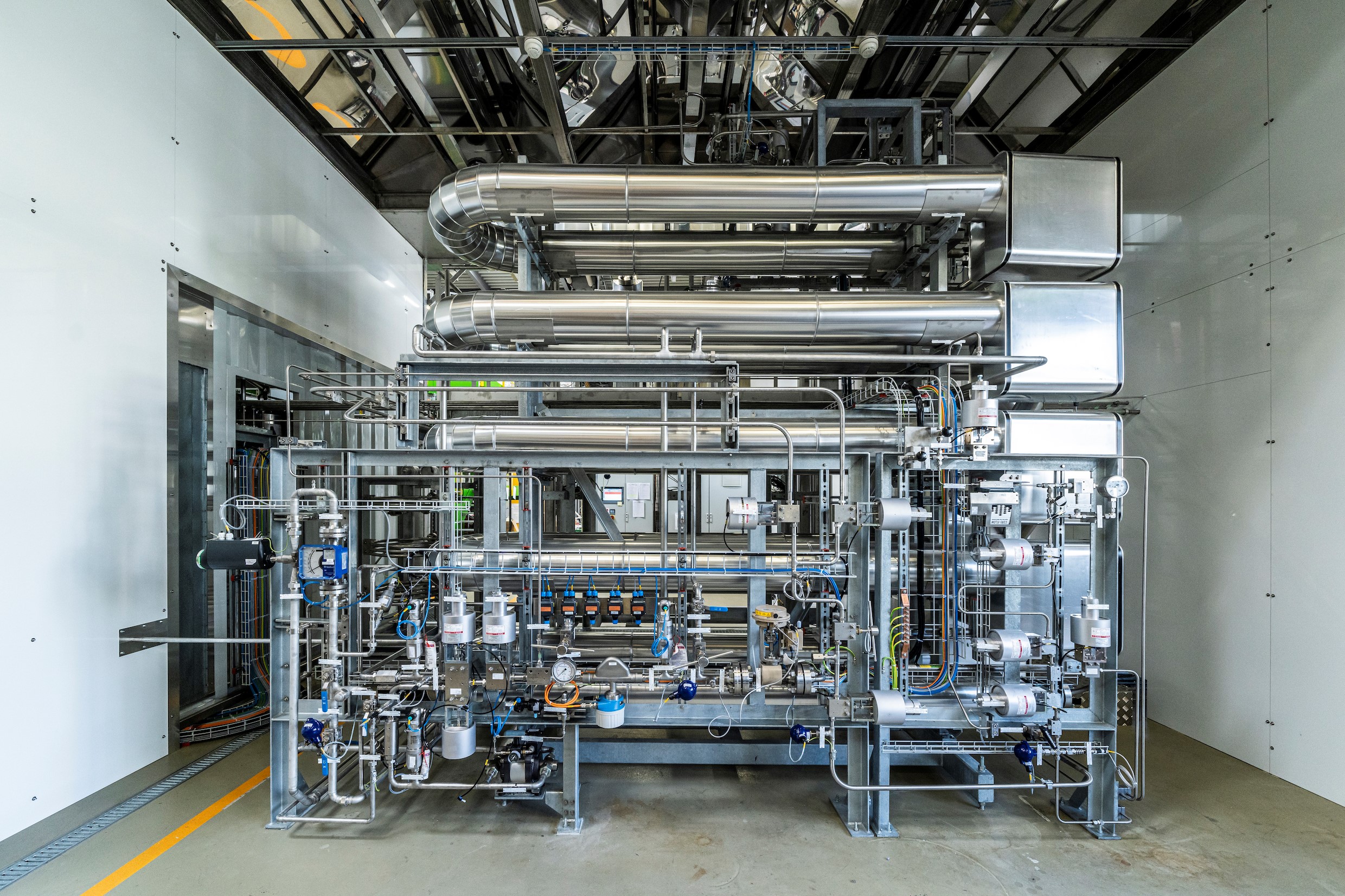
© Treathec
The Valais-based company DePoly recycles PET using a green chemical process that returns it to its original raw materials so that it can be reused indefinitely. TreaTech transforms waste into fertiliser and gas at a low cost. This Lausanne-based company processes industrial effluents and sewage sludge, extracting minerals from waste and processing them into fertiliser, part of which is then converted into gas and water.
Removing CO2 from the air
Atmospheric carbon removal technologies are ready for large-scale deployment. Zurich-based Climeworks, a heavyweight in the sector, raised USD 650 million in April 2022 and is now operating a plant in Iceland that sucks carbon dioxide directly from the air. So far, Climeworks' carbon removal plants are drops in an ocean of carbon dioxide.
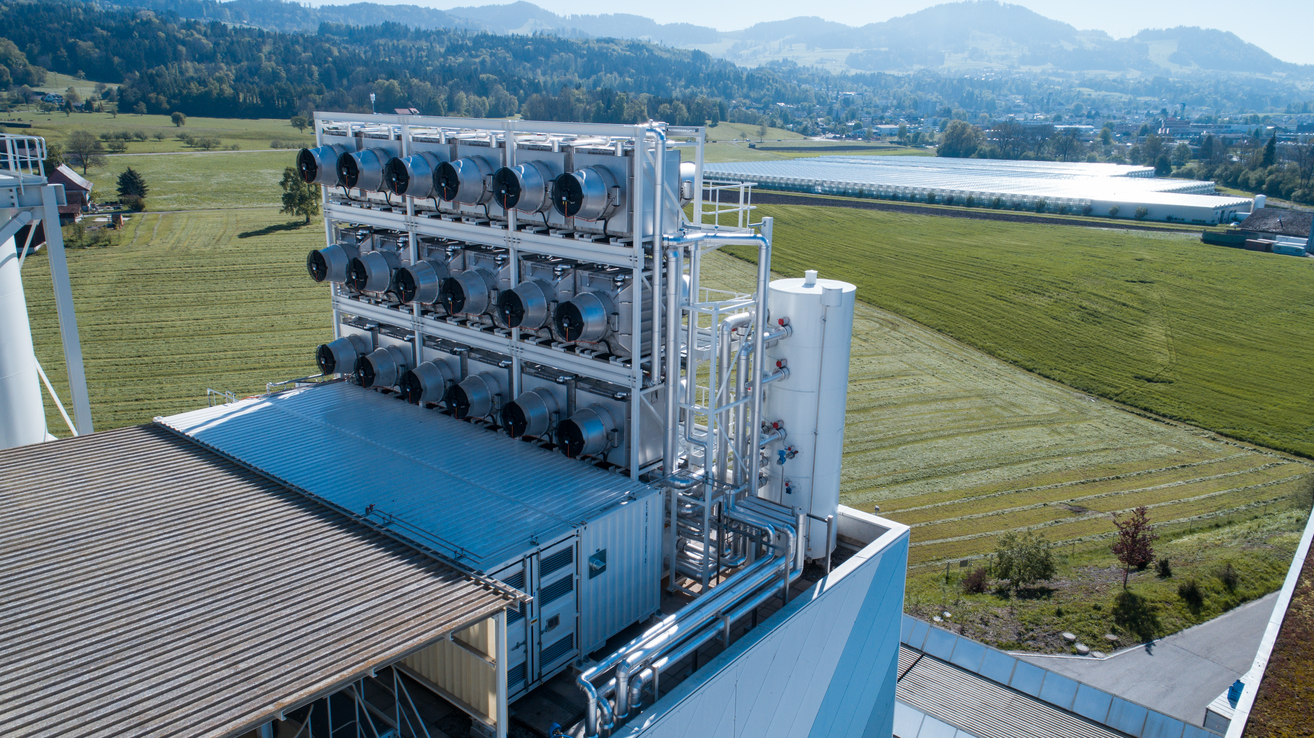
© Climeworks
CO2 recovery? To reduce its considerable carbon footprint, Zurich-based Holcim, the world's largest cement company, is working with ETH Zurich on a project to recover CO2. Valais-based Qaptis has developed a kit that captures CO2 from exhaust pipes. SMEs in the transport sector are making promising and significant advances. Fribourg-based Softcar is developing a hybrid car powered by electricity and natural gas which promises to be the least polluting car on the market. H55, based in Valais, is developing an electric aircraft.

© Anna Pizzolante
The high cost of CO2 remains a problem. Extracting one tonne of CO2 costs USD 600 – ten times the cost of a carbon offset certificate. But the tide is turning, especially as carbon removed from the atmosphere can be converted into plastic, fertiliser and even fuel.
The power of gas
CO2 also promises to play a big role in tomorrow's energy landscape. A German firm, TES, is working on a European underground gas network that will operate in a closed circuit across Switzerland. TES wants to capture CO2 emissions from industrial sites. The company has recently partnered with the Swiss Association of Waste-to-Energy Plant Operators to produce hydrogen and methane from CO2. Unlike electricity pylons, TSE's technology is designed to distribute and store energy without disfiguring the landscape.
CO2? A district heating and cooling network with CO2 instead of water running through its pipes was inaugurated this summer in several buildings on HES-SO's Energypolis campus in Sion in the canton of Valais. According to its designers, Oiken and the start-up Exergo, this technology could be widely adopted in cities.

© SoHHytec
Lausanne-based SoHHytec parabolic dishes concentrate sunlight on electrolytic cells that separate hydrogen and oxygen molecules to recover heat. As for Zurich-based company Synhelion, it employs a technology to produce solar fuels for air, maritime and road transport.
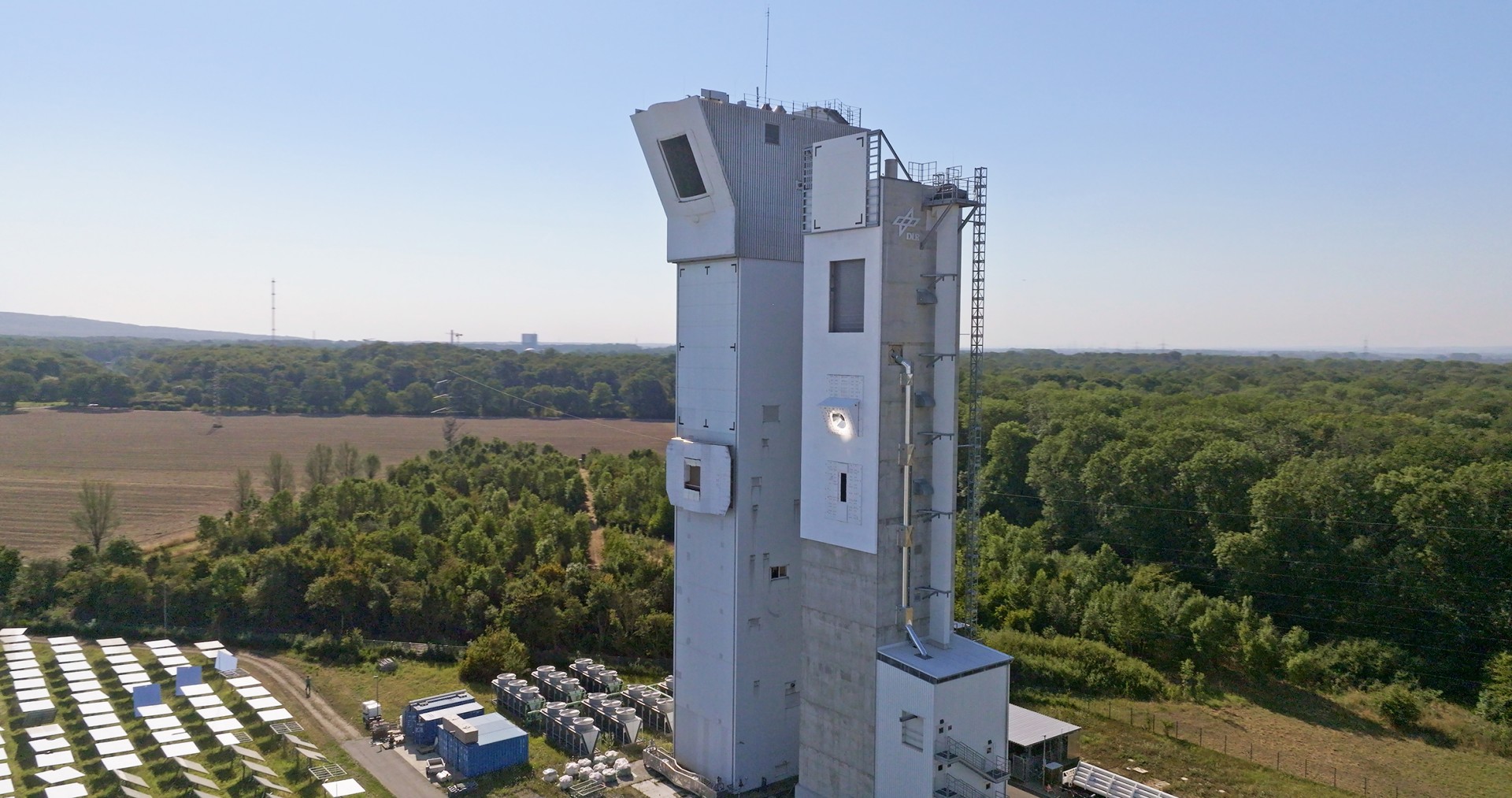
© Synhelion
The classics
Some world-famous Swiss renewable energy facilities have been around for decades. The Grande-Dixence dam, for example, was opened in 1961 and is still generating electricity. Other technologies have never made much headway: there are only 40 wind turbines in Switzerland, despite the fact they have proven to be a reliable technology and energy source.
And sometimes a new solution emerges at just the right time: the Nant de Drance pumped storage hydropower plant, commissioned in the summer of 2022, diverts water from an upstream reservoir and pumps water from a downstream reservoir to increase its power storage capacity.
Almost two-thirds of Switzerland's electricity is produced by dams and one-third by nuclear power plants, both of which are practically carbon neutral. A growing number of start-ups are using artificial intelligence to optimise electric power management, networks and energy efficiency in general, from production in large factories to household consumption.
Article by Richard Etienne originally published in Le Temps on 18 November 2022.




